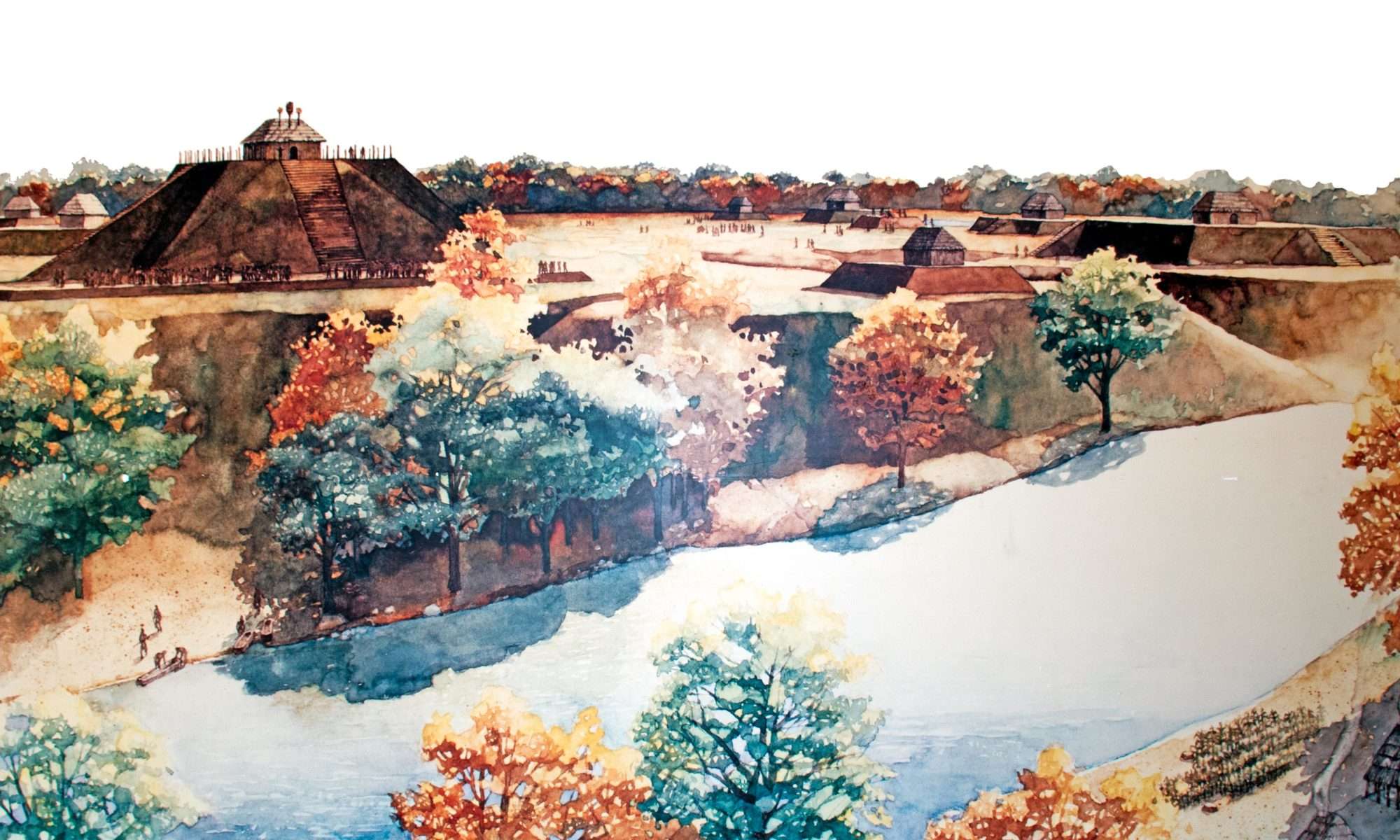Alabama is home to one of the densest concentrations of ancient Native American monumental architecture in all of North America. Thousands of years before the arrival of Europeans, highly organized indigenous societies began constructing mounds and associated earthworks out of earth, shell, and stone throughout Alabama’s landscape. Some of these sites were rivaled in size and complexity only by cities built by the ancient civilizations of Central and South America, as well as the contemporary cities of medieval Europe.
The zenith of monumental construction in Alabama took place between 1000 A.D. and 1500 A.D. when the Mississippian mound complexes of the Tennessee, Coosa, Alabama, Tombigbee, Tensaw, Black Warrior River Valleys, and Alabama’s Gulf Coast dominated the landscape of the region. Each complex site was a bustling center of cultural activity, with tribute and goods from half a continent away pouring in as part of complex economies and belief systems.
There are hundreds of Native American mound sites across Alabama, most of which lie hidden away in forests and fields. However, their story and the story of the people who built them is an important part of our collective heritage. The Alabama Indigenous Mound Trail seeks to enhance public understanding of the purpose and significance of these sites by highlighting those that are (with minor exceptions) open to the public. We encourage everyone to visit each site to experience their uniqueness as cultural landscapes, and to learn more about the people who created them.

